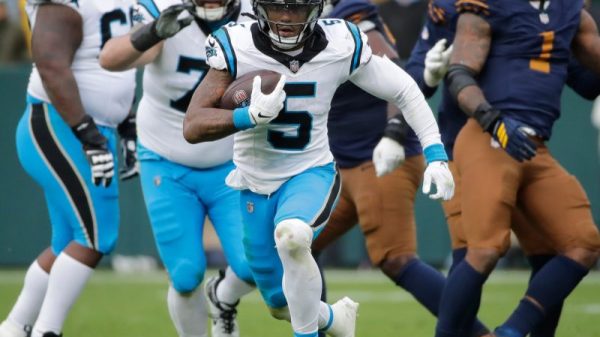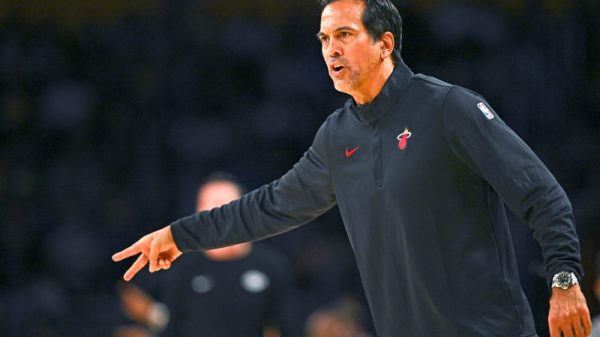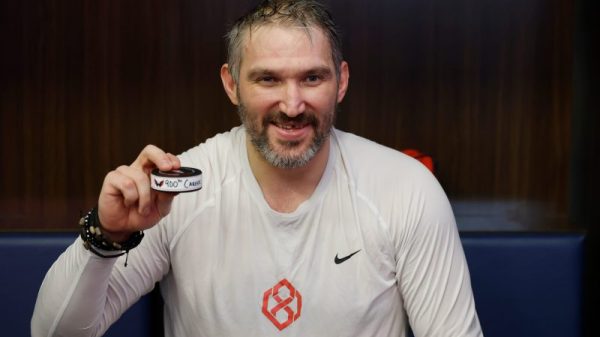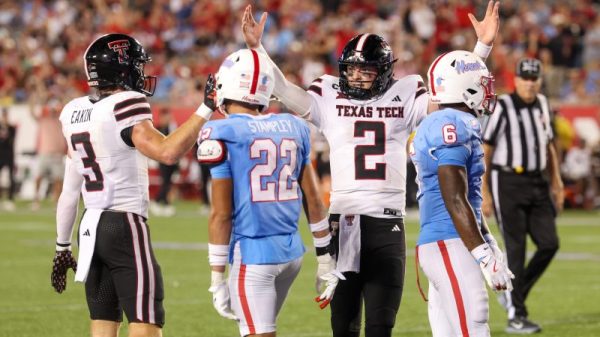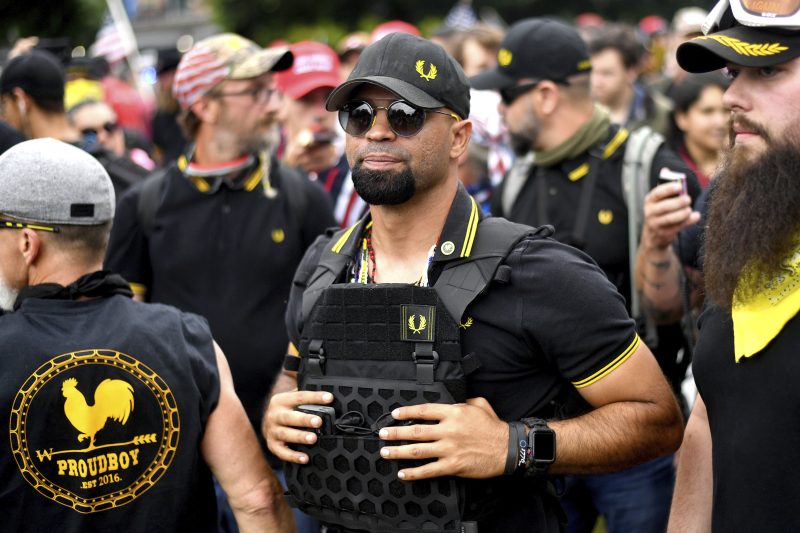Facing the possibility of years in prison on felony convictions, the longtime leader of the far-right Proud Boys sought Tuesday to deflect blame for the Jan. 6, 2021, attack onto former president Donald Trump.
Henry “Enrique” Tarrio is accused of organizing a small group of loyal Proud Boys to lead the pro-Trump mob in storming the U.S. Capitol building. Four members of that “Ministry of Self Defense” have been on trial for the past four months with Tarrio, all accused of a seditious plot to prevent Joe Biden from taking office. While other defendants have pointed at Trump’s role in fomenting the violence at the Capitol, Tarrio’s attorney Nayib Hassan was far more direct. Early in his closing argument Tuesday, he quoted Trump telling supporters to “fight like hell” on Jan. 6.
“It was Donald Trump’s words, it was his motivation, it was his anger that caused what occurred on January 6 in your amazing and beautiful city,” Hassan said. “They want to use Enrique Tarrio as a scapegoat for Donald Trump and those in power.”
What to know about the Proud Boys sedition trial
End of carousel
Hassan kicked off the second day of closing arguments in the trial, one of the most high-profile of the nearly 1,000 Jan. 6 cases the government has charged. He started by quoting President Franklin D. Roosevelt and ended by quoting the Rev. Martin Luther King Jr., both on the importance of protecting the rights of the few as well as the majority.
“If you don’t stand up to the government now as justice requires and the Constitution requires, the next time they may come for you,” Hassan said.
If convicted, Tarrio would be the first person held responsible by a jury for the Jan. 6 riot who was not at the Capitol that day. He would also be the second person with ties to Trump confidant Roger Stone and the second leader of a right-wing organization to be found guilty of seditious conspiracy, after the fall trial of Oath Keepers leader Stewart Rhodes.
Three high-ranking Proud Boys from across the country — Joseph Biggs, Ethan Nordean and Zachary Rehl — were put on trial with Tarrio, along with a recruit who joined in the fall of 2020, Dominic Pezzola.
Prosecutors contended that the Proud Boys saw themselves as Trump’s army, turning the president’s words into violent action.
“Enrique Tarrio isn’t being scapegoated for Jan. 6,” Assistant U.S. Attorney Nadia Moore said in the final argument jurors heard in the four-month trial. “He’s being held accountable for the real crimes that he committed.”
To prove Tarrio’s culpability, the prosecutors pointed to his encouragement during and after the riot along with ambiguous comments he made in advance — including references to a plan for occupying government buildings called “1776 Returns” given to the Proud Boys leader by a girlfriend.
Tarrio was arrested two days before Jan. 6 over the burning a church’s Black Lives Matter flag during a December Proud Boys march in Washington. Just before he was taken into custody, he told one of the other defendants that “whatever happens” they should “make it a spectacle.” After the Capitol was overrun, Tarrio posted on the app Parler that people inside the building shouldn’t leave; after the riot, he messaged other Proud Boys leaders: “Make no mistake … we did this.” That night, Tarrio posted a prerecorded video of himself standing outside the Capitol, titled “Premonition.”
Two Proud Boys, one close to Tarrio, also testified that they were part of a conspiracy to stop the peaceful transfer of power.
Hassan countered that Tarrio was just telling Proud Boys to make noise about his arrest and that his “over-the-top” social media comments should be understood as bluster: “Enrique was an entertainer, a lover and a razzle-dazzler.” He called it “ludicrous and absurd” to believe “Enrique manipulated men and women to do whatever is necessary to stop the transfer of power” without any evidence that he made a plan to do that.
Other defendants hammered that point over the two days of closing arguments. On Tuesday, Pezzola’s attorney said his client never engaged with any of the other men on trial.
“Seditious conspiracy to overthrow his government, with four guys he barely even knew and never even spoke to until he’s in the courtroom?” Steven Metcalf asked incredulously.
Pezzola took a police officer’s riot shield and used it to break a window of the Capitol, the first time the building was breached during the riot.
Metcalf contended that Pezzola was brought into the case “to dirty up the other defendants” with an act of violence. (Only late in the trial did prosecutors allege that Rehl also directly attacked police). Metcalf argued that Pezzola’s instincts as a Marine veteran kicked in when the police fired rubber bullets indiscriminately, causing “chaos upon chaos.” He also alleged law enforcement intentionally “agitated the crowd” into violence: “They wanted that to happen.”
It was one of several references during the trial to unfounded claims that police or FBI informants were responsible for the riot, a source of division among defense attorneys. Nicholas Smith, representing Nordean, on Monday called those beliefs “preposterous.”
In a rambling closing argument, Biggs’s attorney Norm Pattis said it was the government creating “a narrative that seeks to reduce the complexity of life to a simple story.”
Hassan emphasized that from November through January, Tarrio corresponded regularly with Shane Lamond, a D.C. police lieutenant in charge of intelligence. Throughout the trial, Tarrio’s attorneys argued that the correspondence with Lamond indicates the Proud Boys were cooperative with police and had nothing to hide. Lamond is now under investigation for his relationship with Tarrio; Hassan called the investigation “shameful.” Lamond shared information he got from Tarrio with the police department and federal agencies, but he also appeared to give the Proud Boys leader warnings about law enforcement activity. Based on his conversations with Tarrio, Lamond told the D.C. police that there would be an “extremely small” group of Proud Boys in Washington on Jan. 6 and that reports of mobilization for violence were “totally fake news.”
Moore told jurors, “Tarrio had Lamond wrapped around his little finger.”
She reminded jurors that a conspiracy doesn’t have to include verbal agreement to a specific plan, just coming together with a shared goal.
The men who went to the Capitol “acted in a coordinated fashion because they already knew what to do,” Moore said. “They all believed that something had to be done to save the country, and that the Proud Boys were the leaders, and January 6 was their last chance.”







